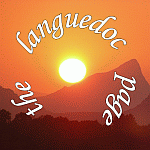| |
| |
Languedoc tourism |
|
What to do |
| |
The Languedoc Rousillon and Provence editions of the Michelin Green Guide series (available in French, English and other languages) provide information on history, activities and town guides. It is the best guide we have found to the area.
- History is never far away in Languedoc. By following the route of the Via Domitia (main Roman road from Rome to Spain) it is possible to see many sites of interest including those at Nimes, and Narbonne. There are also superb sites in Arles, Pont du Gard, Rousillon, and over the border in Provence and Spain (Empuria Brava). Other Roman remains are visible including settlements and bridges throughout Languedoc.
- Equally there are many medieval towns and villages of interest. Many retain their original walls and chateau fort.
- Art lovers can visit the scenes of many artists masterpieces in the area. In particular, a visit to Arles will be of interest to lovers of the work of Van Gogh.
- There are a huge number of activities available in Languedoc. These include sailing, windsurfing, diving, gliding, hang gliding, white water rafting and canoeing, horse riding, walking, mountaineering, winter sports (in season !), swimming, cycling, golf, fishing, canal cruising, caving, water therapy, and even resident art, gastronomy and other courses
- For the less active, visits of gastronomic interest are available. Shellfish around Lac de Thau, sea and freshwater fish, widespread wine tasting, cheeses in the mountains, bull products, rice and salt near the camargue. Olive mills, vineyards and even snail farms are available for visits.
- Relics of old industries are plentiful including silk mills and magnanaries, quarries, coalmines, leather working etc.
- The former island of Sete was developed as a colony and a port by the ancient Greeks. Today it is a major fishing centre, as well as being an active port with freight and a passenger service to Tangier.
- For many, the appeal of sandy beaches with clean warm water is enough. From the Pyrenees to the Rhone, beaches are sandy with the exception of rocky coves at Sete and Cap d'Agde.
- The coastline is dotted with former fishing villages of varying sizes. In the sixties a few purpose built holiday towns were built to challenge Spanish domination of the North European tourist business. Now mature, these towns demonstrate 60's architecture and a certain charm. Grande Motte is a good example.
|
|

![]()